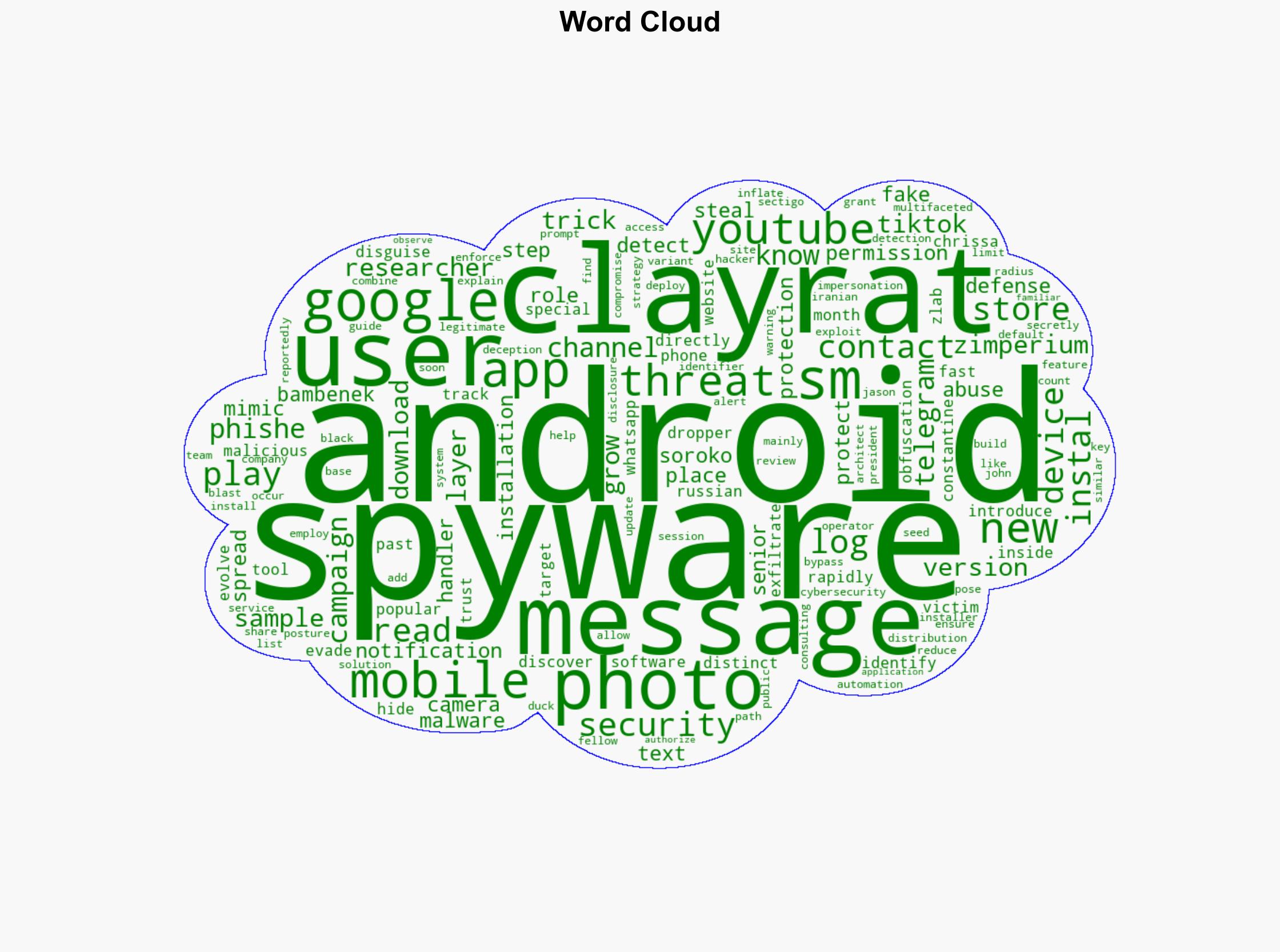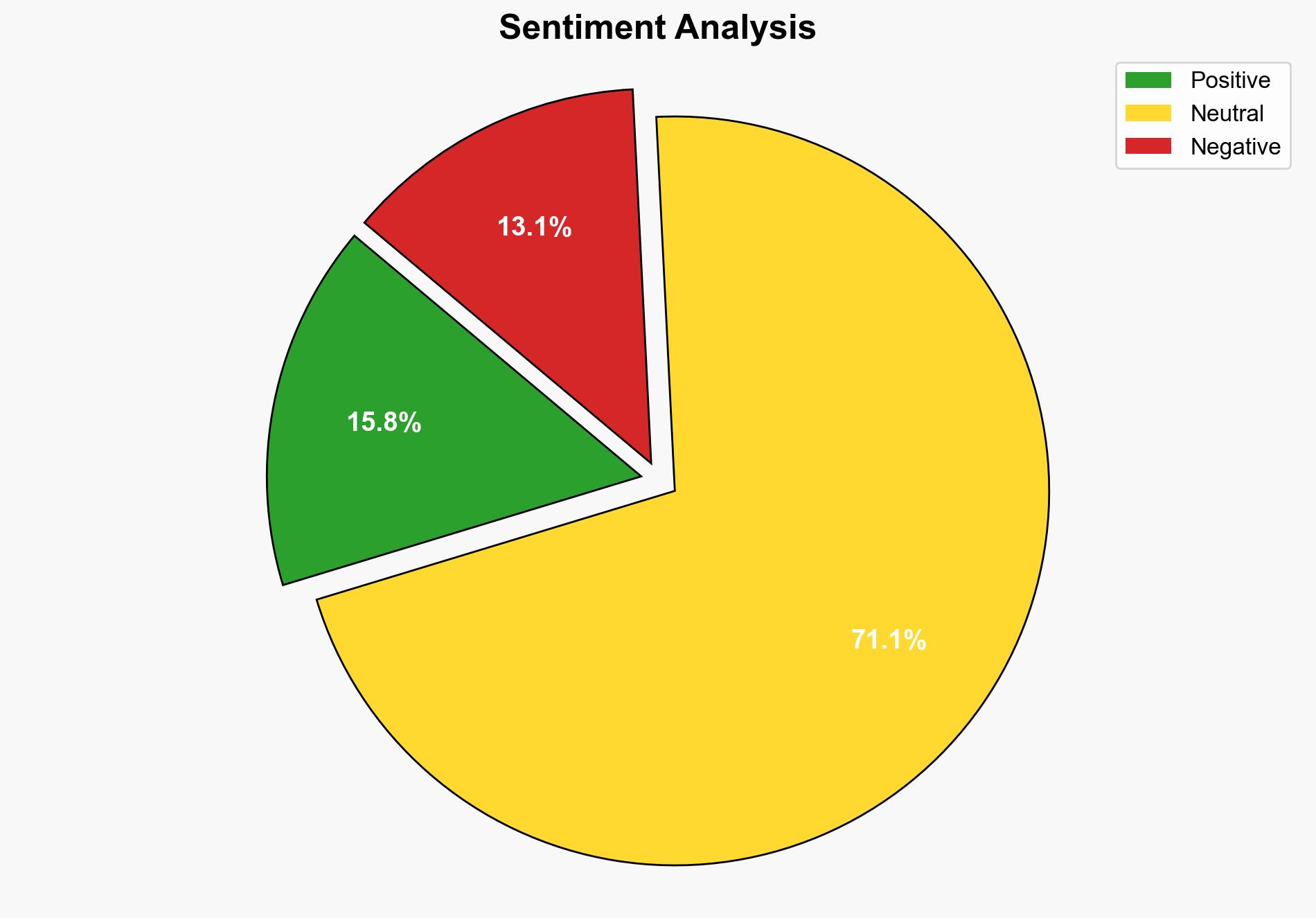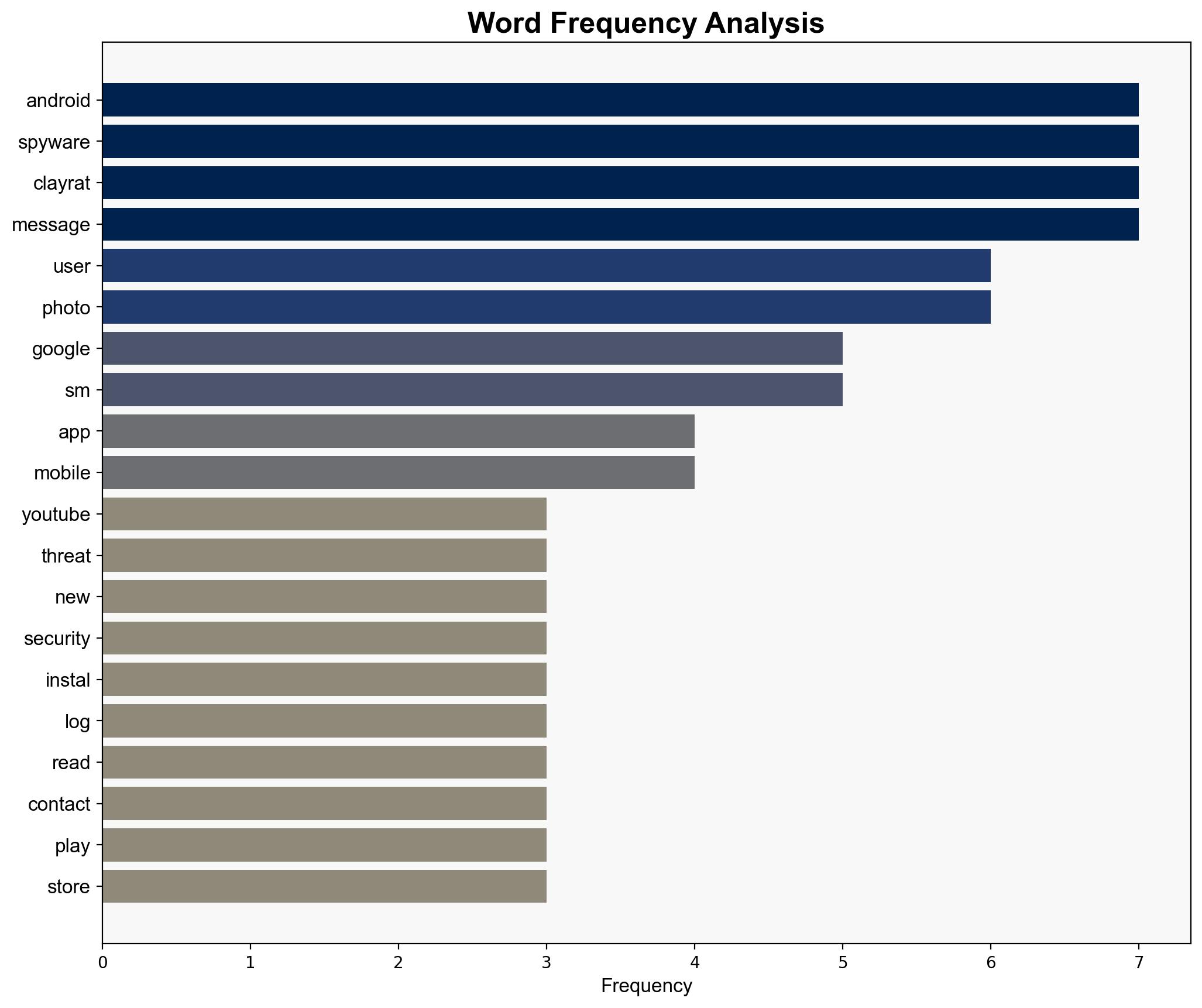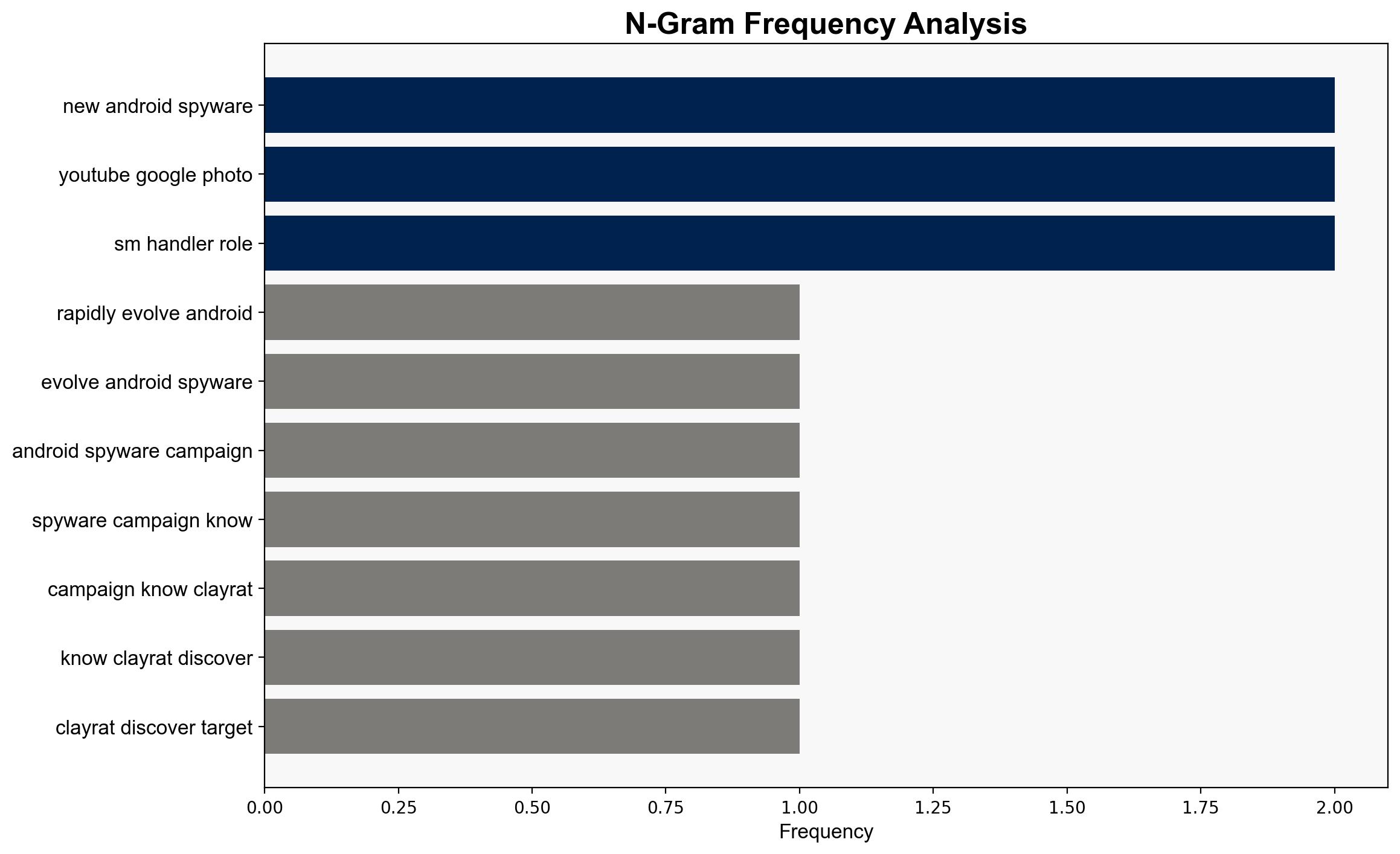ClayRat Spyware Campaign Targets Android Users in Russia – Infosecurity Magazine
Published on: 2025-10-09
Intelligence Report: ClayRat Spyware Campaign Targets Android Users in Russia – Infosecurity Magazine
1. BLUF (Bottom Line Up Front)
The ClayRat spyware campaign represents a significant and evolving threat to Android users in Russia, leveraging sophisticated techniques to evade detection and exploit user permissions. The most supported hypothesis is that the campaign is a state-sponsored initiative aimed at surveillance and data collection. Confidence level: Moderate. Recommended action: Enhance detection capabilities and user education on phishing tactics.
2. Competing Hypotheses
1. **State-Sponsored Surveillance Operation**: The ClayRat campaign is orchestrated by a state actor, potentially Iranian, to gather intelligence on Russian individuals and entities. This hypothesis is supported by the sophisticated nature of the spyware, its targeted approach, and the strategic value of the collected data.
2. **Cybercriminal Enterprise for Financial Gain**: Alternatively, the campaign could be driven by cybercriminals seeking financial gain through data theft and subsequent sale on the black market. This is supported by the use of phishing websites and fake apps, common tactics in financially motivated cybercrime.
Using ACH 2.0, the state-sponsored hypothesis is better supported due to the complexity and resource intensity of the operation, which aligns more with state capabilities than typical cybercriminal activities.
3. Key Assumptions and Red Flags
– **Assumptions**: The analysis assumes that the sophistication of the spyware inherently indicates state sponsorship. It also assumes that the targeting of Russian users is strategically motivated rather than opportunistic.
– **Red Flags**: The lack of direct attribution to a specific state actor raises questions. Additionally, the rapid evolution of the spyware suggests either a highly adaptive threat actor or multiple actors involved.
– **Blind Spots**: The potential involvement of non-state actors or collaboration between state and non-state entities is not fully explored.
4. Implications and Strategic Risks
The campaign poses significant risks to national security by potentially compromising sensitive communications and personal data. It could escalate tensions between Russia and perceived state sponsors. Economically, it threatens the integrity of digital platforms and user trust. Psychologically, it may increase paranoia and reduce the willingness to use digital communication tools.
5. Recommendations and Outlook
- **Mitigation**: Strengthen mobile security protocols and user awareness campaigns to recognize phishing attempts.
- **Exploitation**: Leverage international cooperation to trace and attribute the source of the campaign.
- **Scenario Projections**:
- **Best Case**: Successful attribution and neutralization of the threat actor, leading to enhanced cybersecurity measures.
- **Worst Case**: Escalation of cyber hostilities, leading to broader geopolitical tensions.
- **Most Likely**: Continued evolution of the spyware, requiring ongoing vigilance and adaptation of defensive measures.
6. Key Individuals and Entities
– Chrissa Constantine
– Jason Soroko
– John Bambenek
7. Thematic Tags
national security threats, cybersecurity, counter-terrorism, regional focus




